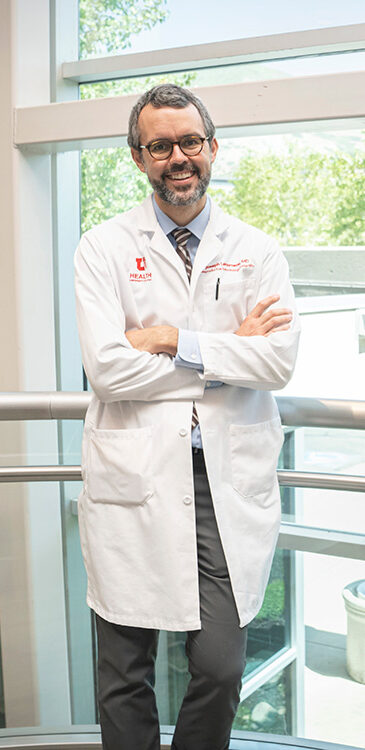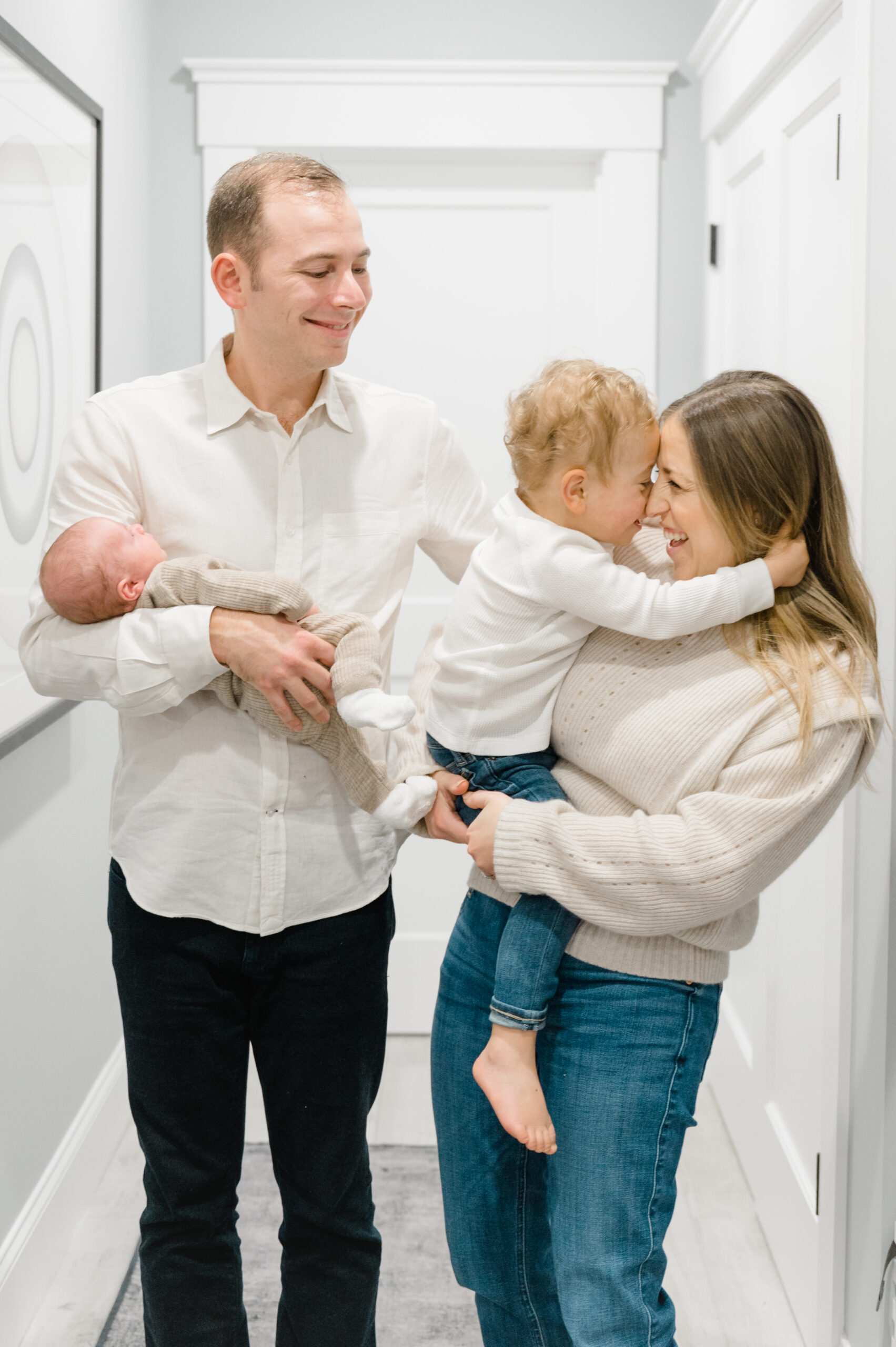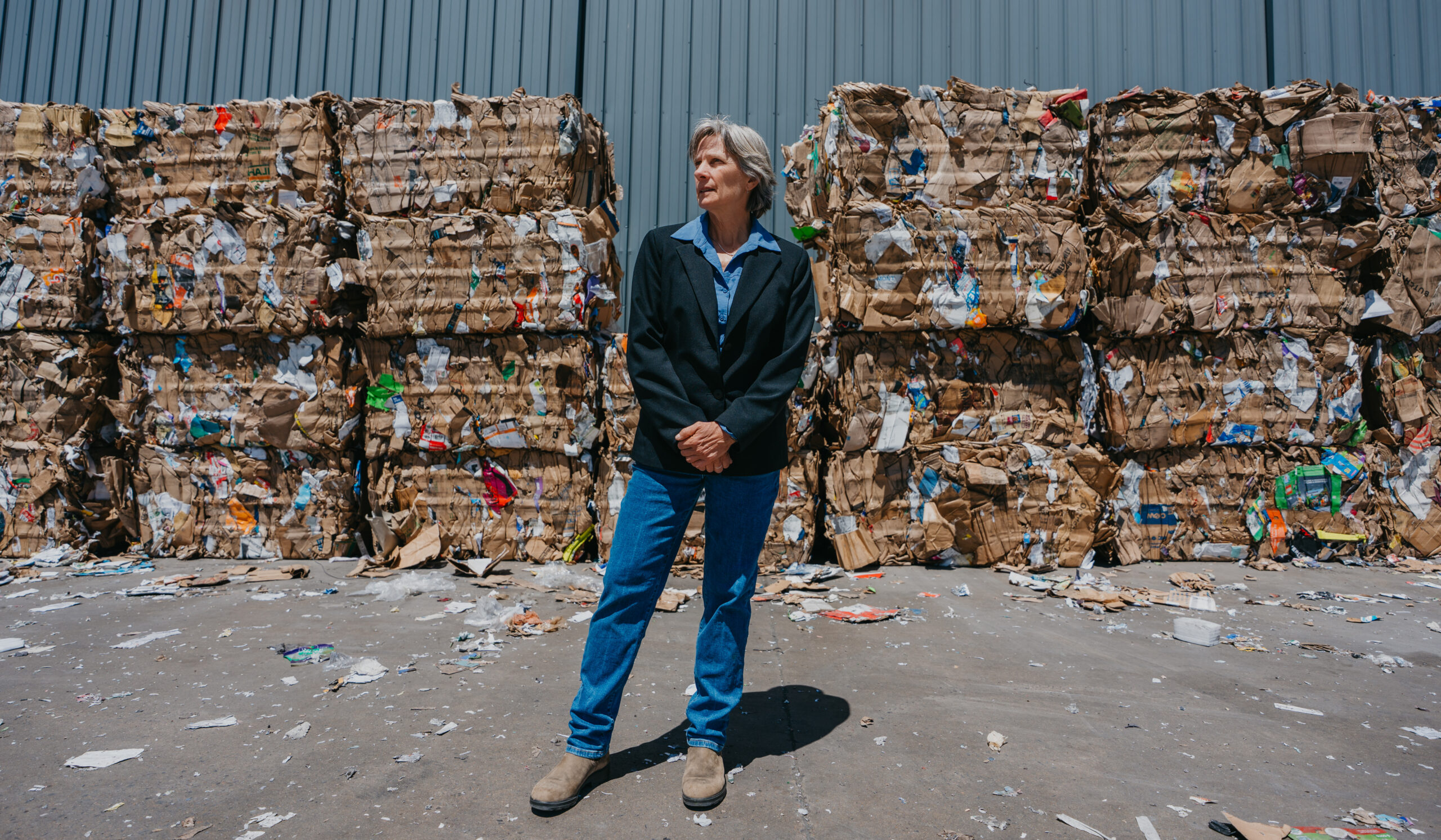The Hope We Preserve
•
Photo courtesy of arielle spiegel
At just 28 years old, unexplained infertility was a challenge that Arielle Spiegel, ’10, and her husband neither expected nor felt prepared for when it happened. She recalls it as one of the most “lonely” and “isolating” times of her life.
But she was far from alone.
Infertility is a heavy cloud weighing over more than 17.5 percent of the global adult population. Some pine from devastating miscarriages, others never conceive after dozens of painful procedures and failed rounds of fertility treatments. They all grieve children they may never know and answers they may never have as the world moves on around them.
“We’re basically told that it’s easy to get pregnant and to not really investigate our fertility until there’s a problem,” Spiegel says. “With infertility affecting [about] 1 in 6 people in the world, we have to be a little more proactive about this.”
Dr. Joe Letourneau, ’06, the medical co-director of the University of Utah’s oncofertility program, watches it consume the worlds of young patients simultaneously facing timely decisions about their cancer treatment and fertility preservation. The program, started 2018, merges oncology and fertility care for patients of a reproductive age interested in having future children.
Through their careers and personal experiences, both Spiegel and Letourneau see accessibility and education as the biggest barriers preventing people from proactively seeking fertility treatments, or even seeking them at all. They’ve both taken it upon themselves to do something about it.
Spiegel is the co-founder of Cofertility, which started as an educational, content-focused infertility resource hub and community amid her own infertility struggles, and has evolved into a destigmatized, scalable approach to reshaping fertility preservation and third-party reproduction.
Letourneau is tackling the treatment and policy side of the battle, educating legislators, and lobbying for expanded coverage for fertility preservation. He led a coalition of health care providers that helped make Utah the second state to cover oncofertility services for Medicaid patients.
Collectively, their work is helping to destigmatize infertility and provide the opportunity for hundreds of people to build families on their own terms.
The Price of Possibility
Many people find their journey to parenthood forced into a race against time, looking for ways to pause the biological clock to preserve their fertility and chance for a future family.
“While more and more women could potentially want or need to pursue methods like [in vitro fertilization] — especially as women are starting families later and there are just a lot of barriers to fertility preservation — it’s a topic that really remains stigmatized,” Spiegel says. She points to a “fundamental lack of accessible, affordable, standardized, proactive education, and resources.”
Across most of the globe and the U.S., fertility treatments are primarily funded out of pocket. With an average price tag of $15,000 to $30,000 for a single cycle (though many patients require more), high costs frequently prevent people from accessing fertility treatments or, alternatively, can catapult them into poverty as a consequence of seeking care.
For Letourneau’s patients — many of whom are insured through Medicaid — cost is the “biggest encumbrance” to seeking fertility preservation. They’re already facing the steep cost of their cancer care so, for most, the added cost of preserving their fertility is out of the question.
“We see people from 1 day old to about their mid-40s, so it’s really tough to see someone like a 15-year-old kid and their parents right in front of you and hear them say, ‘We’d like to do [fertility preservation], but we can’t because we can’t afford it.’”
Spiegel points out that fertility preservation treatments are increasingly offered as a benefit in the workplace, but mainly through “large tech and finance companies and consulting firms,” adding that there are many people underrepresented by that coverage “who just don’t have access to egg freezing in an affordable way.”
In a statement, Dr. Tedros Adhanom Ghebreyesus, director general at the World Health Organization, said, “The sheer proportion of people affected shows the need to widen access to fertility care and ensure this issue is no longer sidelined in health research and policy, so that safe, effective, and affordable ways to attain parenthood are available for those who seek it.”
Changing the Ecosystem of Family Building
Spiegel’s Cofertility co-founders Lauren Makler and Halle Tecco say they know the anguish of infertility because they’ve lived it, each with their own complicated fertility journeys. They describe being told by doctors that they would never have biological children, going through years of infertility treatments, and experiencing the defeat of the egg donor process, the devastation of miscarriages, and the loneliness of the journey.
“It just became clear very quickly that the three of us were super passionate about just giving women more power over their reproductive health, a power that I wish I had earlier on in my life,” Spiegel says.
Together, they set out to improve the family-building process for all, empowering people to freeze their eggs more accessibly and affordably while helping other families grow — ones that might need third-party reproduction.
But Cofertility quickly “evolved from content and information to actual action.”
The trio raised $5 million in seed funding and, in October 2022, debuted Cofertility’s new two-part platform: Freeze by Co and Family by Co. The platform matches people who want to freeze their eggs with families who could not otherwise conceive. By donating half of their frozen eggs, patients can access egg freezing for free.

“Historically, we’ve really seen the egg donation through the third-party reproduction process just feel kind of icky and not super positive when family-building should be this incredibly positive and beautiful journey, especially for parents who have already faced a really winding road to growing their family, whether that’s because they face fertility challenges or because they’re LGBTQ,” Spiegel says.
On the Freeze by Co side of the platform, there are Split and Keep programs.
Through the Split program, people can freeze their eggs for free when they donate half of their retrieved eggs to a family who can’t otherwise conceive. Spiegel says “intended families” might include “couples with infertility, gay dads, or cancer patients and survivors like [Letourneau’s] patients who maybe couldn’t take advantage of fertility preservation.”
Through Freeze by Co’s Keep program, people can store their eggs for their own future use, with lower prices on things like storage and access to the Cofertility community.
Family by Co is the second part of the platform, what the company calls its “fertility ecosystem” — a human-centered approach for matching intended parents with egg donors from the Split program.
“We say that the best time to freeze your eggs is when most people can least afford it, so this [model] is a way to kind of solve both ends of that ecosystem problem; women can [afford to freeze their eggs] and have a life-altering impact on intended parents, helping them grow their families with the support and the experience that they really deserve,” Spiegel says.
Making a Case for Coverage
For many young cancer patients, being told they may be infertile on top of receiving a cancer diagnosis can feel twice as devastating.
“It’s a big sense of loss, a big sense of biological interruption that you didn’t expect,” Letourneau says.
The high costs of fertility preservation are exacerbated by the short window of time patients can receive treatment for their cancer. In some cases, not even all of their cancer care is covered by insurance.
Letourneau estimates 1,200 people ages 15 to 39 years old are diagnosed with cancer in Utah yearly. They’re faced with life-altering decisions about cancer treatments — like chemotherapy, radiation, and surgery — that can impact their fertility by damaging eggs and sperm, reproductive organs, and/or endocrine functions.

Letourneau works with the program’s other director, Dr. Douglas Fair, to provide more equitable access to oncofertility services, starting with standard care information about how cancer treatment can affect fertility.
Through public health advocacy, they work to improve the availability of resources, like funding, for patients.
“Often, people on Medicaid are not going to have the cash-based financial resources to just pay for fertility preservation if it’s not covered by Medicaid, so it seems like the most significant sort of systems-based reason that people weren’t getting this care,” Letourneau says.
Currently, only 19 states mandate insurance coverage of in vitro fertilization (IVF), the most successful fertility treatment on the market. Letourneau says that providing comprehensive access to IVF treatments “tends to be very inexpensive on a per health care dollar basis” but has long been perceived as a “luxury item.”
Letourneau and Fair formed a coalition to provide medical expertise and testimony that helped expand Medicaid coverage to financially help cancer patients preserve their fertility before beginning lifesaving treatments.
“We try to give hope for the future, help them understand there’s still a possibility to build your family through donors, donor eggs, stuff like that. And to encourage people, even if they can’t afford to protect their family now, that there are lots of ways they can still do it in the future," Letourneau says.
He hopes these efforts help lawmakers understand the impact these legislative changes have on patient decision making in the family-building process.
“It really takes sitting down with people to kind of look them in the eye and ask them to think what this would be like if they went through it. When they do, they suddenly have a much different vantage point on it, a much different
sense of empathy,” he says.
While Letourneau recognizes that fertility is “really delicate and complicated” to dictate from a policy level, he believes this legislation and the program’s advocacy work are “opening doors as opposed to closing them.”
Through this work, Letourneau hopes to smooth his patients’ path to parenthood.
“We try to give hope for the future, help them understand there’s still a possibility to build your family through donors, donor eggs, stuff like that. And to encourage people, even if they can’t afford to protect their family now, that there are lots of ways they can still do it in the future,” Letourneau says.
‘My Life’s Mission’
Spiegel’s journey to motherhood didn’t begin exactly how she’d imagined, but it’s finally playing out exactly how she’d hoped: she and her husband are now parents to Levi, 3, and Violet, 7 months.

“I feel incredibly lucky,” she says, reflecting on the long road it took to get here. “After trying to get pregnant for so long, you’re never able to exhale until that baby is in your arms. And you’ve spent so much energy thinking about getting and staying pregnant that as a result, you’re kind of unprepared for what happens next.”
She recognizes that there are many people who spend “tons of time, energy, and money on [this], and still not experience ‘success.’” But in her case, she says, it was all worth it. She hopes she can make the journey much less agonizing for others.
“It’s the best feeling every day to know that we’re giving people the opportunity to become parents who might otherwise not be able to conceive,” Spiegel says. “I feel like this is my life’s mission.”
KATIE FRANKHART is a senior writer at the Alumni Association of the University of Michigan.



